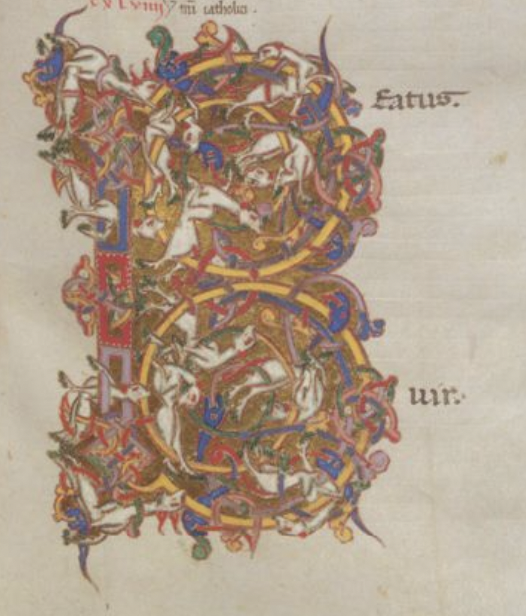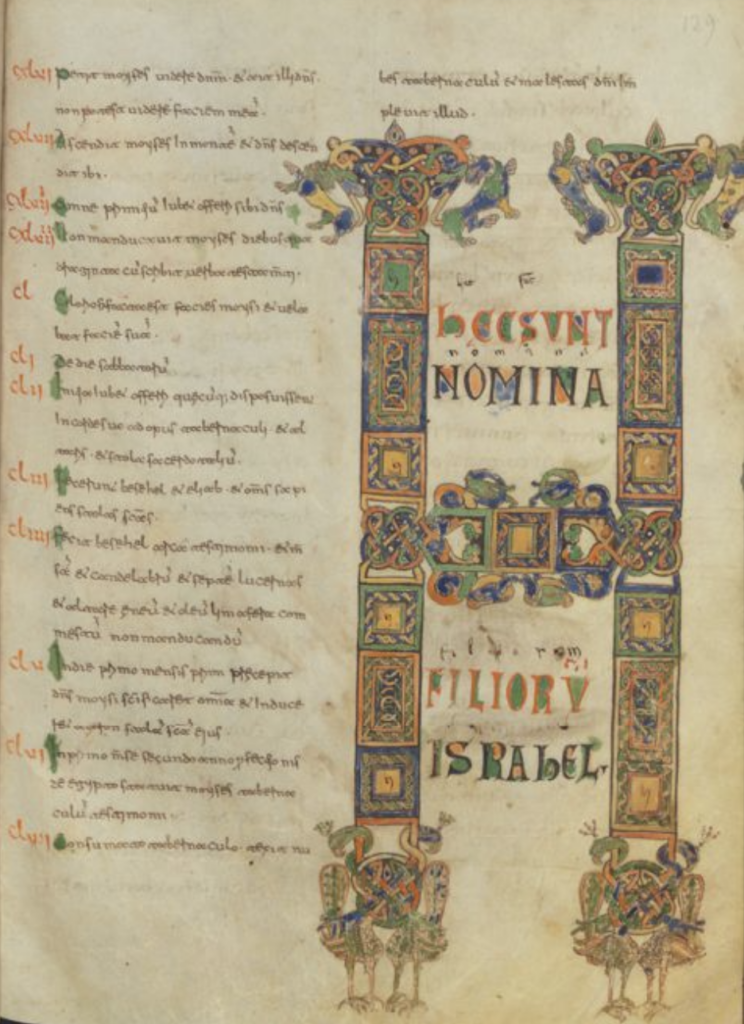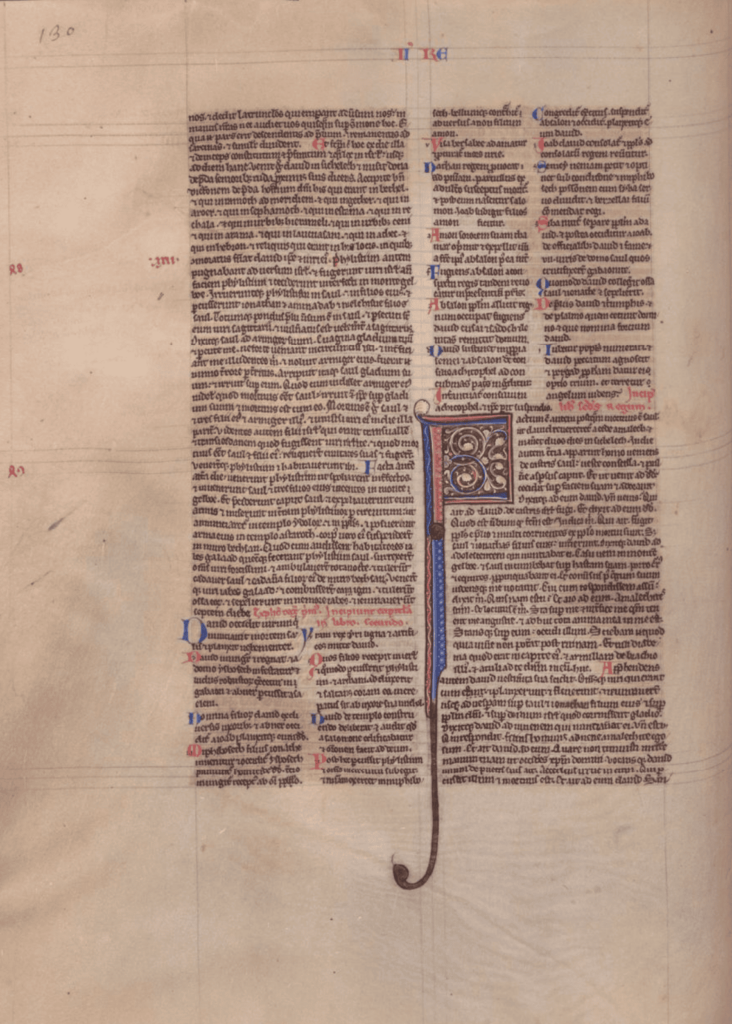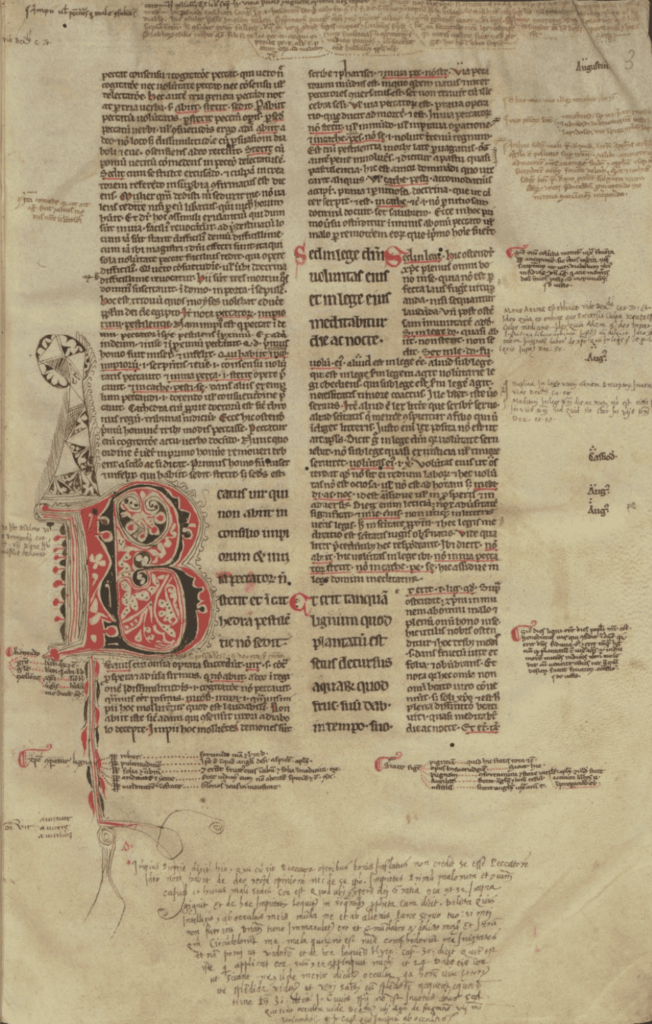The Bible at Montecassino
The Archive of the Montecassino’s Abbey preserves 96 biblical manuscripts, datable between the 11th and 15th centuries. They were produced both in the Abbey’s scriptorium and in other geographical areas of medieval Italy and Europe. This substantial corpus represents a unique case study. On the basis of paleographic and textual characteristics, it is customary that the codices are divided into three groups: bibles in Beneventan script, bibles in Carolingian script, and glossed bibles. The analysis of the manuscripts preserved at Montecassino makes it possible to analyze the material and textual changes that affected the typology of the Bible book during the medieval age, taking into account the peculiarities of dating, provenance, material procedure and textual arrangement.
A special catalog dedicated to the biblical manuscripts of Montecassino has recently been published:
Roberta Casavecchia – Marilena Maniaci – Giulia Orofino, La Bibbia a Montecassino / The Bible at Montecassino. Schede catalografiche di / Catalogue descriptions by Laura Albiero, Roberta Casavecchia, Angela Cipriani, Mariano Dell’Omo, Richard F. Gyug, Erica Orezzi, Leda Ruggiero, Gaia Elisabetta Unfer Verre, Turnhout, Brepols, 2021 (Bibliologia, 60) [DOI 10.1484/M.BIB-EB.5.124550].
In the Middle Ages, the Bible is universe in its own right: an account of divine Revelation, the Word of God and an indispensable tool of the liturgy. A book composed of many books, and continually copied, illustrated and adapted to the needs of its users.
In late antiquity, and throughout the early Middle Ages, complete Old and New Testament Bibles were quite rare; the Bible circulated mostly as a sequence of distinct volumes, often referred to by the term “bibliotheca,” namely collection of books. Bible manuscripts, therefore, may differ from one another in terms of the Old and New Testament books they are composed of, the order in which they follow one another, and also in terms of decorative elements or the presence of glosses and commentaries.
Montecassino provides an exemplary case in order to examine the material and textual changes affecting the book of the Bible during the Middle Ages:
– the Cassinese scriptorium maintained throughout the Middle Ages a strong local tradition, but it was also opened to influences and novelties from outside;
– the Archives holds a substantial number of biblical manuscripts (92), datable between the 11th and 14th centuries; some were produced in loco, others brought in from elsewhere in medieval Italy and Europe;
– these manuscripts show differences involving workmanship, text, writing and decoration such as to highlight the evolution of the Bible as a book in the Middle Ages.
1. The complete ‘monolithic’ Bibles
The transcription of the entire Bible (Old and from the New Testament) is a rather rare event in the early Middle Ages. Only two complete Bibles are preserved at Montecassino dating before the 12th century, very different from each other: the Casin. 515 and the Casin. 557. 557.
The Casin. 515 is one of the so-called ‘Atlantic’ Bibles, produced during the Gregorian Reform, and is one of the oldest, dating from shortly after the mid-11th century. It is a representative book, a symbol of the authority of the Church. The manuscript possibly arrived at Montecassino by the will of Abbot Desiderius, but this Atlantic Bible was probably produced in Rome, even if part of its decoration was completed at the abbey’s scriptorium.
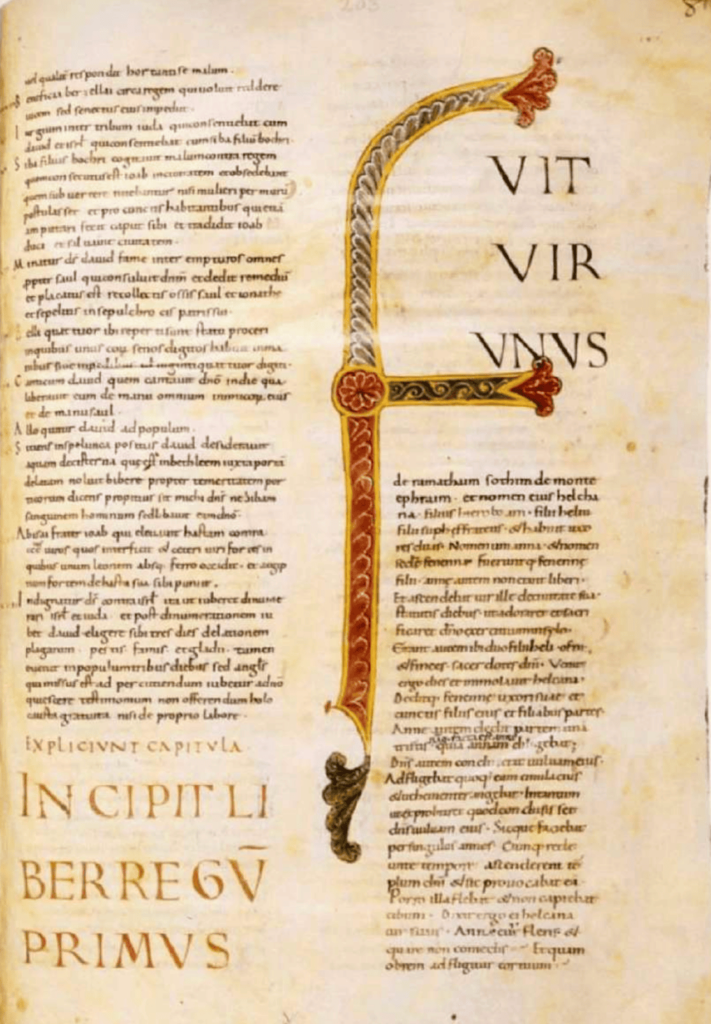
The Casin. 557, datable to the third quarter of the 12th century, is the oldest complete bible, produced at Montecassino. It is a manuscript of small size and reduced form of the script, used not for liturgy but for study and personal reading. It is called the “Iron Bible” because one of the scribes, Ferro, subscribed it by highlighting with capital letters touched in red the word that corresponds to his name, whenever he encounters it in the text.

p. 254 (detail)
2. Beneventan and non-Beneventan Bibles.
Beneventan Bibles are written in Beneventan script, the minuscule used in the Lombard territories of central and southern Italy. They are a product of the monastic tradition of Lombard southern Italy, and are all partial Bibles, or groups of biblical books.
In the Beneventan Bibles, the books of the Old and New Testaments are assembled in such a way that their sequence coincides with that of the biblical texts to be read, during the course of the liturgical year, during the morning office, which was celebrated at night. This is because the Rule of St. Benedict obliged monks to read, during Lent, “parts of the Bible in order and entirely.” Twenty Beneventan Bibles are preserved at Montecassino, all produced during the 11th century. They are all medium-large in size, with the text in two columns, and often with impressive decorations, which can occupy the entire page.
These manuscripts had a liturgical use, which is also confirmed by the presence of neumes, the graphic signs of medieval musical notation.
To the group of non-Beneventan Bibles belong 18 manuscripts, 5 of them produced at the Abbey, and 13 in other areas of Italy and Europe. These manuscripts are written in classic Caroline, the lowercase script that, from the 8th century, spread from the Carolingian empire into the Franco-Germanic area, Spain, northern Italy, and then southern Italy.
The group includes 8 complete Bibles datable between the 13th and 14th centuries, of which one was produced locally (Casin. 35), one is from Central Italy (Private Archives 3) and three were produced in France (Casinn. 508, 509 and 519): the latter, small in size, with a rather compressed text layout and sober decoration, correspond to the model of the portable Bible, for preaching and study, typical of French production from the 13th century.
3. Glossed Bibles
Between the 11th and 11th centuries, a new book type, the glossed Bible, spread from the cathedral schools of northern France: the biblical text, initially arranged in the central column, is complemented with commentaries, or glosses, that guide its access and interpretation.
In the Abbey sixty glossed manuscripts are preserved, datable between the 12th and 14th centuries, some of them were produced at Montecassino, such as the Casin. 264, written by the same Ferro copyist as the Casin Bible. 557, others were acquired from outside; some of them arrive at the Abbey as early as the 12th century, a sign of the Cassinese scriptorium ‘s openness to incorporate the new models of Bibles already circulating in Italy and Europe.
In a glossed Bible, the text and gloss form a complex unit, in which the biblical text is differentiated by major form or color. On the page, the biblical text may be arranged in the central column, reserving the two side columns for the gloss; it may be confined to small boxes, surrounded on three sides by the gloss; or text and gloss may be written alternately in a continuous manner, but differentiated by the color of the ink.


